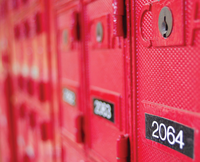
Lead Image © Paul Herbert, 123RF.com
Exploring dhcpy6d, a DHCP server for IPv6 networks
Not Just Addresses
The auto-configuration mechanisms built into IPv6 mean you don't necessarily need a DHCP server in order to avoid the cumbersome task of manual address configuration. However, modern DHCP servers don't just hand out addresses. Unless you're using some special extensions or add-on services, the native auto-configuration features of IPv6 won't configure important settings such as the DNS server, so, in practical terms, a DHCP server is still required for larger networks.
RFC 3315 [1], which appeared in July 2013, defines the DHCPv6 protocol. As you can imagine, the long IPv6 addresses and other changes to the protocol, such as the preference for multicast versus broadcast addresses, result in significant changes to the DHCP service. Even the DHCP ports are different with IPv6 (UDP 546 with the client; 547 with the server).
Several options are available for DHCP in IPv6, including Dibbler [2], Internet Systems Consortium (ISC) DHCPv6 [3], and WIDE-DHCPv6 [4], and each has a slightly different approach to a very perplexing problem.
What completely messes up the existing concept of IP address allocation is a parameter called the DHCP Unique Identifier (DUID), which all DHCPv6 clients compute during the first call and then store in a file. According to Paragraph 9 of RFC 3315, the DUID is the only characteristic by which a server can recognize its clients – and vice versa. The RFC even says in the RFC that: "Clients and servers MAY NOT interpret DUIDs in any other way."
The DUID can be generated three ways:
- A timestamp plus link layer (the MAC address with Ethernet).
- An enterprise ID plus a variable part.
- Just the link layer address.
The link layer address might sound like
...Buy this article as PDF
(incl. VAT)
Buy ADMIN Magazine
Subscribe to our ADMIN Newsletters
Subscribe to our Linux Newsletters
Find Linux and Open Source Jobs
Most Popular
Support Our Work
ADMIN content is made possible with support from readers like you. Please consider contributing when you've found an article to be beneficial.






